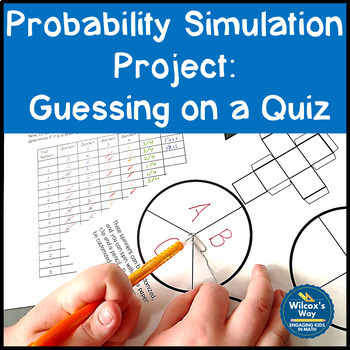Probability Simulation Project
- PDF
- Easel Activity
What educators are saying
Also included in
- Get all of the 7th grade math activities from my store in this one awesome bundle! With this bundle, you'll get a great variety of games, stations, centers, notes and other activities that will help make your planning a breeze all year long! Currently, this bundle includes:✍14 expressions and equPrice $125.00Original Price $194.50Save $69.50
Description
In this project, students will design and use a simulation to find the experimental probability of compound events. The simulation is meant to simulate guessing on a four-question quiz that has multiple choice and true/false questions. After students design the simulation, they will conduct trials to find the probability. They will compare experimental and theoretical probability for each question, and use their trial results to find the probability of passing the quiz. Students will also make predictions based on their results.
You will receive a printable pdf version as well as a link to download a Google Slides version in which all of the text is editable.
This resource contains all the resources necessary to implement this project, including
⭐project overview
⭐ project expectations
⭐simulation design
⭐trial results
⭐results analysis
⭐predictions.
Additional materials:
✅grading rubric
✅blank manipulatives template, and
✅differentiation options including two extension tasks
✅differentiation options including sentence frames for students needing accommodations
Related Products
⭐ Simple and Compound Probability Partner Activities
⭐ Experimental and Theoretical Probability Stations
⭐ Digital Math Experimental and Theoretical Probability Quiz for Google Forms
Be the first to know about my new discounts, freebies and product launches:
• Look for the green star next to my store logo and click it to become a follower. You will now receive email updates and be the first to know about new products and sales.
Don't forget to leave feedback to earn free TpT credits!
I would also love to connect with you on Facebook, Pinterest, and through my blog!







